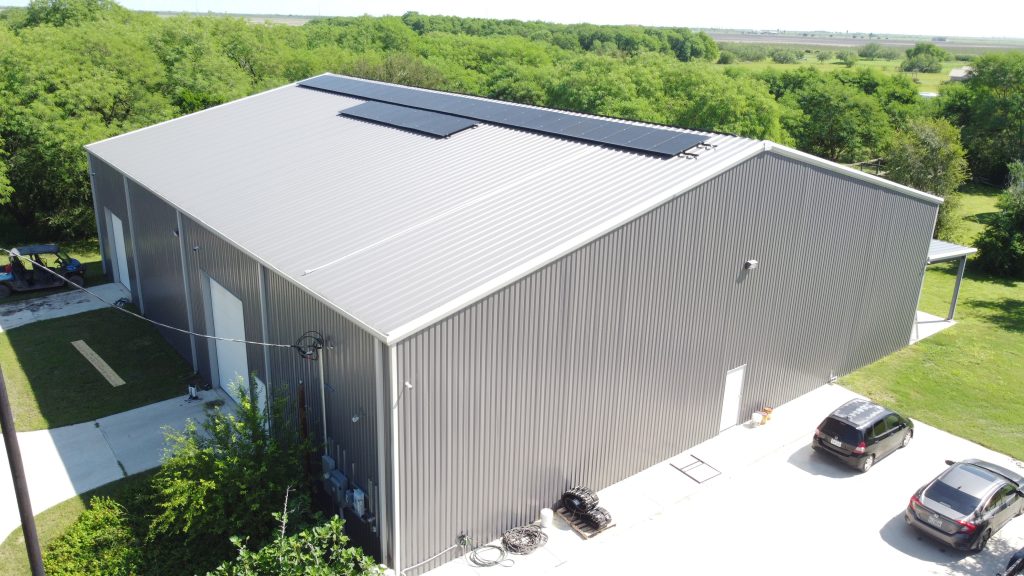Sustainability & Energy Efficiency in Metal Buildings
Building a Greener Future with Metal Structures
As more consumers and businesses prioritize sustainable construction, metal buildings have emerged as one of the most eco-friendly building options available. Whether you’re considering a residential, commercial, or industrial metal structure in Bastrop, Texas, understanding how metal buildings contribute to energy efficiency and sustainability can help you make an informed, environmentally responsible decision.
From energy-saving insulation and solar panel integration to reducing carbon footprints and achieving LEED certification, metal buildings are designed to maximize efficiency while minimizing environmental impact. Let’s explore how these structures support a greener future while also offering long-term cost savings.
Eco-Friendly Benefits of Metal Buildings
Metal buildings are one of the most sustainable construction options due to their recyclability, energy efficiency, and minimal waste production. Unlike traditional wood or concrete buildings, steel is 100% recyclable and often made from recycled materials, making it a top choice for environmentally conscious builders.
Key Sustainability Benefits:
✅ Recyclable & Reusable Materials – Most steel used in metal buildings is composed of 70-100% recycled materials.
✅ Energy Efficiency – Superior insulation options reduce heating and cooling costs.
✅ Minimal Construction Waste – Pre-engineered metal buildings create far less job site waste than traditional buildings.
✅ Long-Lasting & Durable – With proper maintenance, metal buildings can last 50+ years, reducing the need for frequent replacements.
Energy-Efficient Insulation Options
Proper insulation is essential for maximizing energy efficiency in metal buildings, especially in climates like Bastrop, Texas, where summers can be scorching. Insulation not only reduces energy costs but also improves indoor comfort by maintaining consistent temperatures year-round.
Types of Energy-Efficient Insulation for Metal Buildings:
- Spray Foam Insulation – Provides a seamless air barrier, preventing leaks and enhancing temperature control.
- Fiberglass Blanket Insulation – A budget-friendly option that helps reduce heat transfer and moisture buildup.
- Rigid Board Insulation – High-density insulation designed for extreme temperature control.
- Reflective Insulation (Radiant Barriers) – Deflects heat away from the building, reducing cooling costs in hot climates.
Benefits of Proper Insulation:
✅ Lowers energy bills by reducing HVAC usage.
✅ Prevents moisture buildup, reducing the risk of mold and rust.
✅ Enhances indoor air quality by reducing air leaks and drafts.
Solar Panel Integration

Adding solar panels to metal buildings is an excellent way to further enhance sustainability and reduce reliance on fossil fuels. Metal roofs are particularly well-suited for solar energy systems, thanks to their durability, longevity, and ability to support mounting systems without structural modifications.
Why Metal Buildings Are Ideal for Solar Panels:
- Long-Lasting Roofs – Metal roofs last 40-60 years, outliving most solar panel systems (25-30 years).
- Energy Savings – Solar power reduces electricity costs and reliance on the grid.
- Tax Incentives & Rebates – Many federal and state programs offer tax credits for solar panel installations.
- Cool Roofing Effect – Some metal roofing materials reflect sunlight, reducing heat absorption and improving solar efficiency.
Reducing Carbon Footprint
By choosing a metal building over traditional wood or concrete structures, you’re actively reducing carbon emissions and supporting more eco-friendly construction methods.
How Metal Buildings Reduce Carbon Footprints:
✅ Less Energy Use – Pre-engineered buildings require less manufacturing energy.
✅ Fewer Deforestation Impacts – Unlike wood structures, metal buildings don’t contribute to large-scale deforestation.
✅ Improved Energy Efficiency – Superior insulation and reflective coatings lower energy consumption.
✅ Recycled Materials – Using steel from recycled sources prevents unnecessary mining and waste.
LEED Certification & Sustainability Practices
For businesses and individuals looking to construct a certified eco-friendly building, LEED (Leadership in Energy and Environmental Design) certification is a globally recognized standard for sustainable construction.
✅ Energy-Saving Tips for Metal Buildings
💡 Maximize Natural Light: Install skylights or larger windows to reduce artificial lighting needs.
💡 Use Smart Thermostats: Optimize energy usage by regulating indoor temperatures automatically.
💡 Choose Energy-Efficient Doors & Windows: Double-pane windows and insulated doors reduce heat loss.
💡 Apply Cool Roof Coatings: Reflective coatings on metal roofs lower cooling costs.
💡 Incorporate Rainwater Collection Systems: Reduce water consumption by collecting and reusing rainwater.
📋 Sustainability & Energy Efficiency Checklist
✔ Install high-performance insulation to regulate indoor temperature efficiently.
✔ Consider solar panels to lower energy costs and reduce grid dependency.
✔ Use recycled or recyclable building materials to lessen environmental impact.
✔ Invest in LED lighting for long-lasting, energy-efficient illumination.
✔ Ensure airtight construction to prevent energy leaks.
✔ Optimize building orientation for passive solar heating and cooling.
📊 Diagram: How a Sustainable Metal Building Works
A well-designed sustainable metal building incorporates:
🔹 Solar panels on the roof for renewable energy generation.
🔹 High-performance insulation to reduce heating/cooling costs.
🔹 Energy-efficient windows and doors to prevent temperature loss.
🔹 Rainwater harvesting systems for sustainable water use.
🔹 Cool roofing materials that reflect heat instead of absorbing it.
🌍 Sustainability & Energy Efficiency Summary
✔ Metal buildings are one of the most sustainable building options available today.
✔ Superior insulation, solar panel integration, and energy-efficient materials help reduce energy consumption.
✔ Recycled steel and minimal construction waste contribute to a lower carbon footprint.
✔ LEED certification is achievable for eco-conscious builders, helping create truly green structures.
🚀 Want to build a sustainable, energy-efficient metal structure? Contact us today for expert recommendations tailored to Bastrop, Texas, and beyond!
